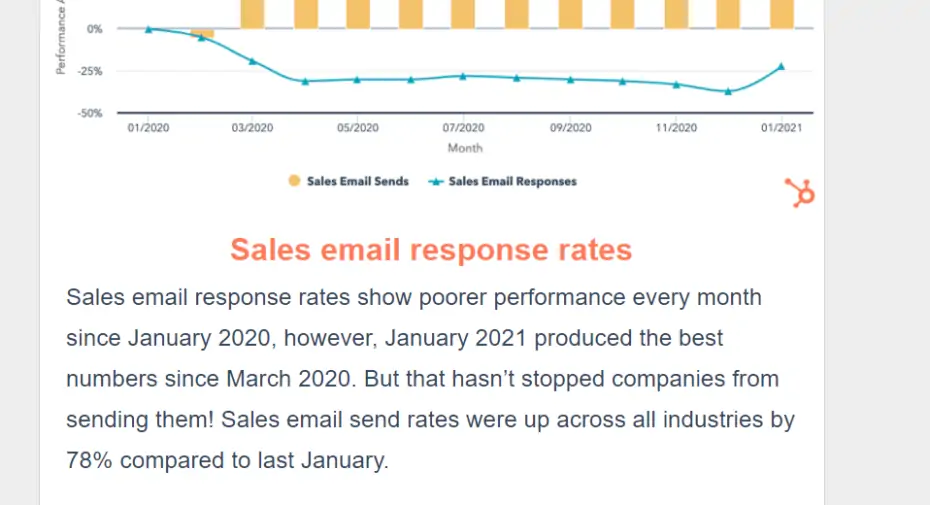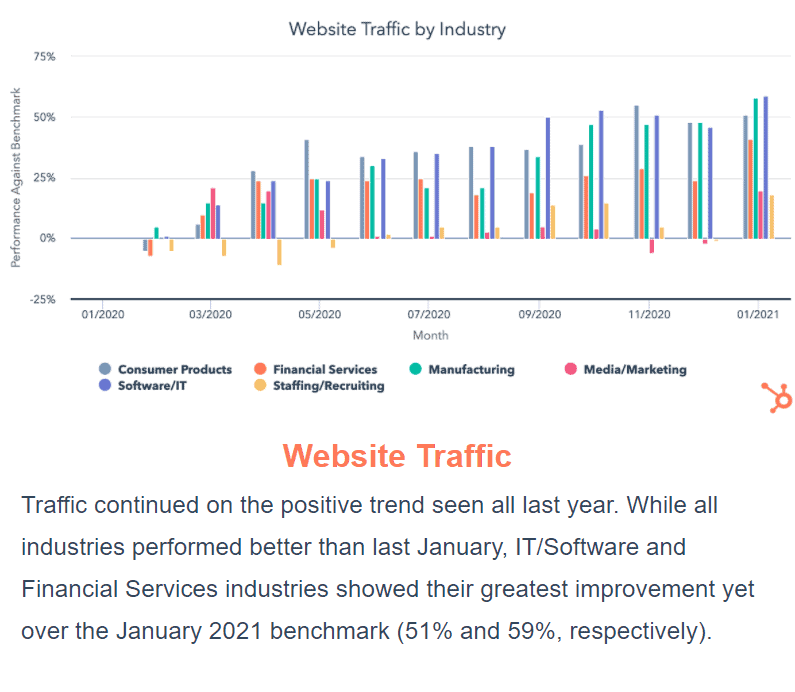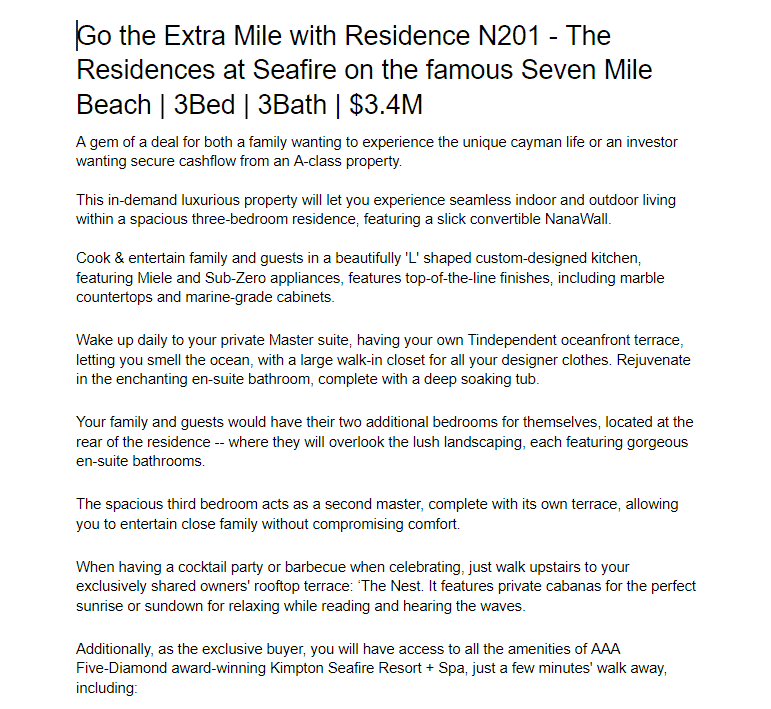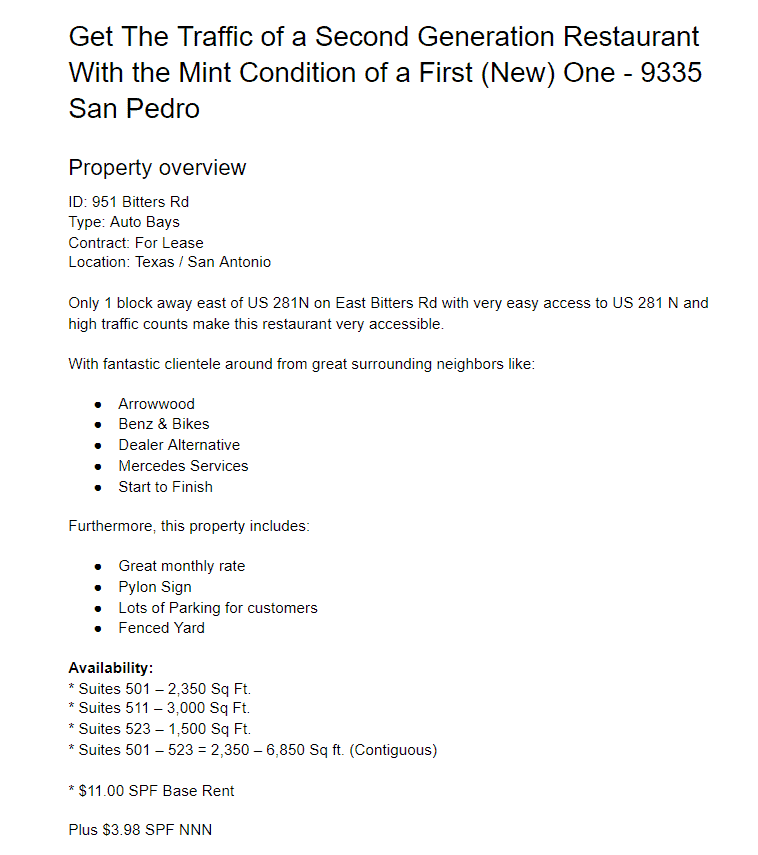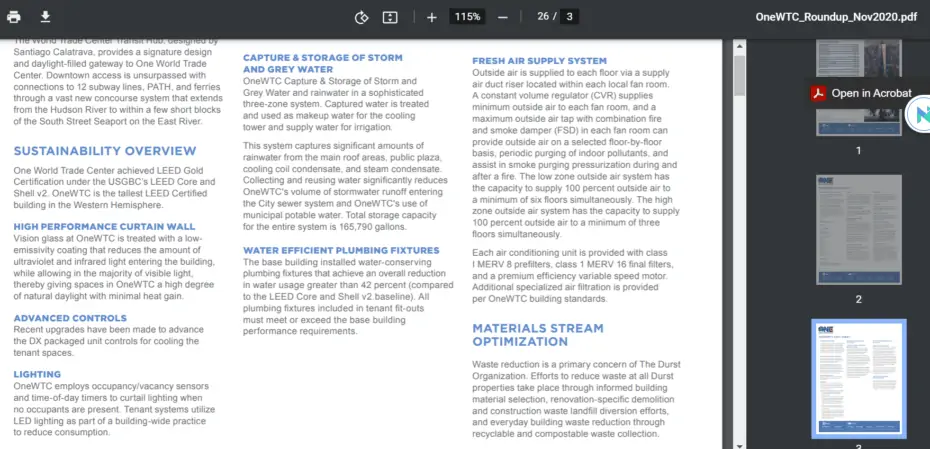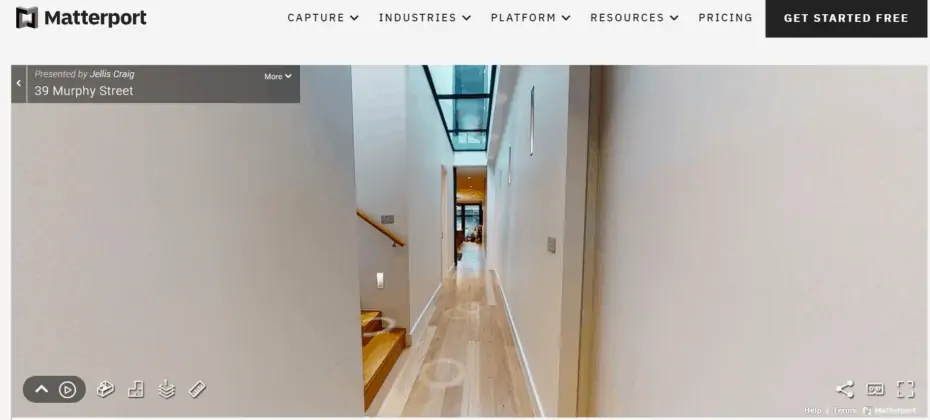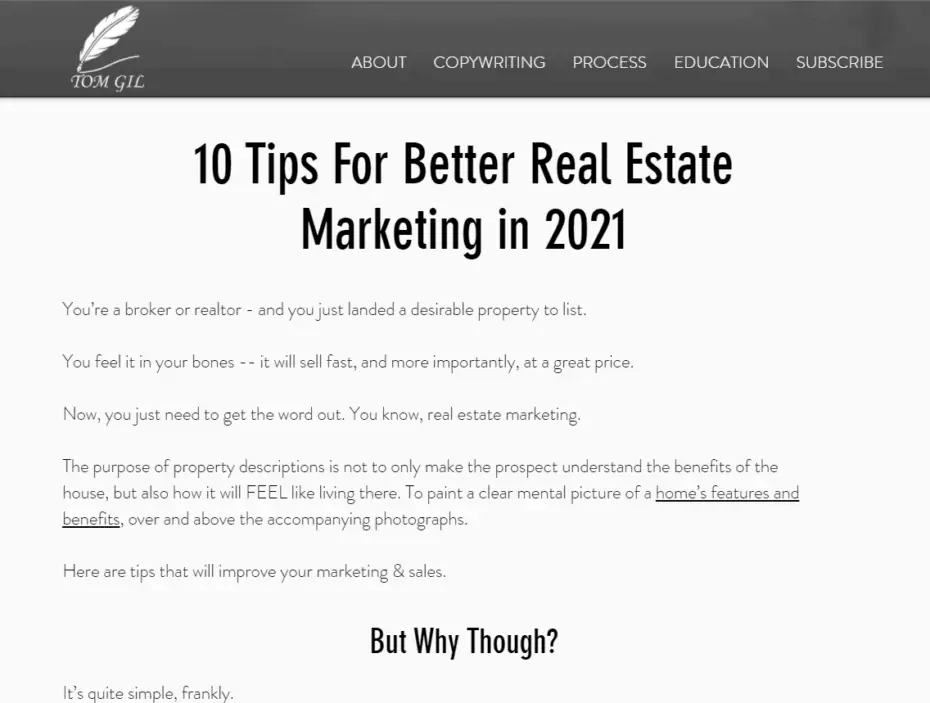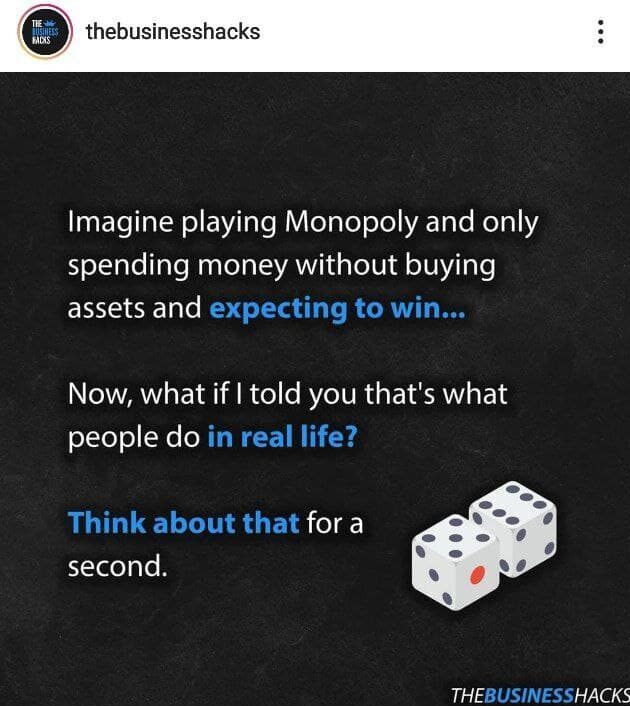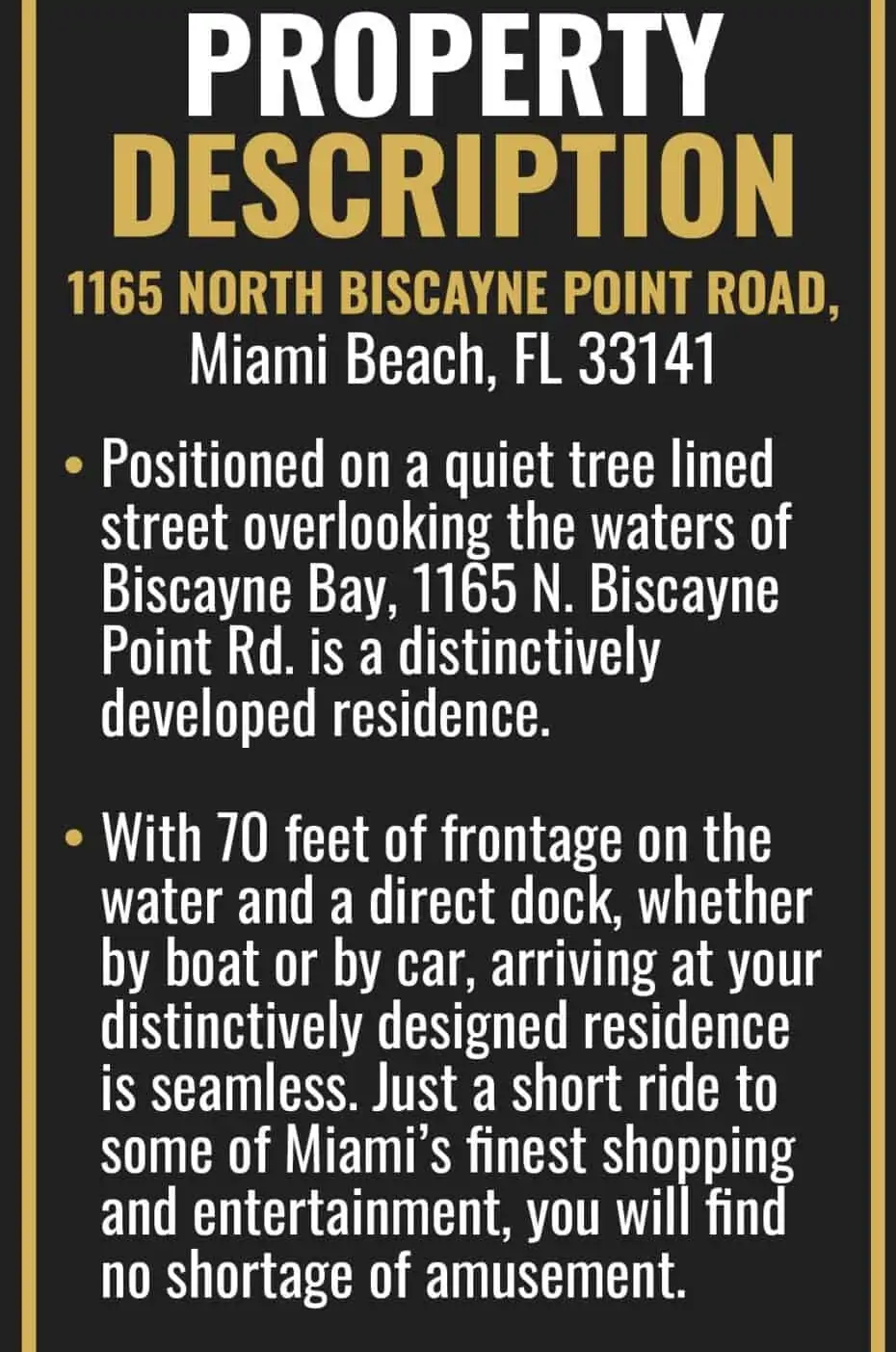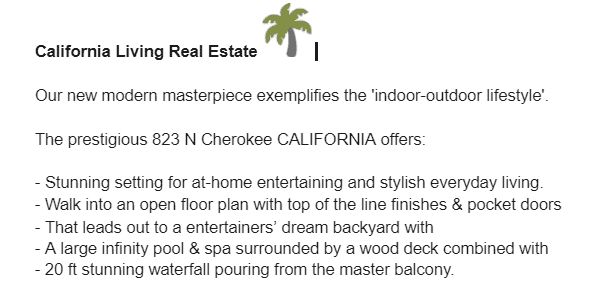
The world went digital long before COVID. The reality that 2020 forced on us just accelerated that trend.
And now the real estate space was further affected by increasing the trend of homeowners and investors now roaming the web to find their deals.
With this new accelerated remote buying experience, digital marketing and/or copywriting for your properties is now a necessity. Two years ago, it was implemented heavily by businesses that wanted to thrive. Today, your business must use it just to survive.
Here are eight ways to stand out in your real estate marketing through great copywriting in 2021.
1. Email (Sales) Copy
Every good email needs to be opened before it’s read.
Even if you write the best email of your life, the body of your email won’t matter if the recipient isn't interested in opening it.
And the competition out there is fierce. Everyone's email inbox is crammed with sales emails, but their quality? Not as strong. Check out the 2021 HubSpot research stats:
One of the most fundamental rules of engaging copy is creating a “hook” in each line so the reader wants to read the next. Email copy is no different, and the first line your recipient reads is the subject line. Body copy is obviously important, too, as it is what will convert after gaining that initial attention.
The more you know your target audience, the better you’re equipped to pick the right hook. Generally speaking, you can choose from five hooks that yield high open rates:
- Curiosity
- Relevance
- Urgency
- Value
- Emotion
Out of these five, the strongest is curiosity because it’s universal. Age, gender, ethnicity, industry, sector, and other variables in the equation don’t affect it—as long as you’re targeting humans.
Another factor is ego. Important people always want to be the right person, after all. And when you personalize the email like you're talking specifically to that person, you tick that box.
Finally, the body copy needs to be clear, concise, valuable, relevant to the headline—so it doesn't mislead people.
When I approached Seth to write this article for REtipster, I used three of these routes:
If you said curiosity, relevance, and emotion, you're correct.
- Curiosity: “Is it my land? What land?” Seth probably said to himself reading this.
- Relevance: Seth uploaded a video to his YouTube channel about land a week prior.
- Emotion: “Cracked Me Up” (“I want to laugh too!” which means desire; or “Is he making fun of me?” which means fear).
Everybody Sells
If you’re writing emails and thinking,
“But I’m not selling anything here…”
You are. You are always selling the prospect on why you're worth their time and attention.
Here are two practical tips you can implement right away to get higher opening rates for your emails by using the curiosity hook:
- Ask an interesting question that's relevant to the recipient.
- Use an incomplete sentence, something they will care about. Follow through in the email's body.
2. Website Copy
The face of your business in 2021 is your website. We are going from very digital to exclusively digital. Here are the numbers from HubSpot:
The most common mistake many websites make is failing to include a UVP (Unique Value Proposition) on their homepage.
Web designers call a UVP the “hero shot” for a reason. It’s the headline that captures the attention of every prospect landing on your page; it IS the single most important thing on your website.
On average, a person reading website content only has about 8 seconds to spare. This is why your copy needs to get your point across in about 12-15 words (or in 3-4 seconds of reading time). In that time, the prospect needs to understand:
- What you have to offer.
- Who is it for.
- Why you are the best choice.
There are many ways to approach this, but no matter how you do it, it needs to retain the brand’s value, culture, and voice.
Why the Focus Should Be on “You”
Another sin many websites commit is talking about themselves. You see them use “us,” “we,” and “our” instead of “you” and “your.”
Here is an example of a website copy that’s company-centric and not client-centric. It also uses an image carousel, which is in itself a bad thing:
Here's the second:
And third:
Count the number of times they said “we” vs. the number of times they said “you.”
Zero.
The truth is that consumers are selfish. They want to be treated the best, feel understood, be empathized with. When they land on your website, they want to feel certainty, trust, and empathy. And when you can solve their problems and fulfill their desires, they'd spend money on you.
Remember: You are not the hero—your customers and prospects are. Your website and homepage should show:
- How you solve THEIR problems.
- How you provide THEM value.
- Why THEY should invest with you.
- How you can make THEIR life easier.
What Is Your Website For?
Finally, what's the number one thing you want your prospect to do when browsing your website?
- Subscribe to your email list?
- Submit their property information to you?
- Call you on the phone?
- Set up a meeting or consultation?
- Collect the demographics and re-target them with specifically targeted ads?
- Collect client data, such as their emails or phone number? And for what purpose? Upgrade? Retention?
Based on this decision, the website developer can work with the copywriter to create a seamless, cohesive experience for the prospect—by leading them or using emotional triggers, resulting in a logical close.
3. Property Listing Copy
You can divide this into residential and commercial. The approach is the same, just with a subtle difference.
Residential Listing Copy
Here's a “before” and “after” of a luxury real estate company's copy:
Before:
After:
Notice that the first description is a wall of text, making it hard for the reader to read it. Everything is told fast about the features of the property.
And you aren’t a salesperson; you're guiding the hero (buyer) to his goal—to buy the home.
- Notice the headline. There was no headline prior, just the address.
- Notice how the word “you” never appears in the old copy.
But how do you guide them? Tell a story so vividly, they can imagine themselves in it. In the story, notice how the features turned into benefits, painting a picture in the prospect’s mind.
Commercial Listing Copy
Just like a residential listing copy, the same concept applies to commercial listings. But with commercial properties, the location matters more. Location will often decide the fate of the business, such as for restaurants.
Here's a commercial listing improved using the same principles as above, but with emphasis on location:
Notice the client-centered (and unique) headline, with the benefit of existing client traffic, and how it makes them feel part of an exclusive pack of other great businesses around them. Also, the copy notes how great the clientele traffic in the area is, entertaining possible revenue opportunities and making it desirable.
Even big brands fail in this category. Look at this example from the new WTC in Manhattan's fact sheet. It's full of features, like advanced and efficient plumbing systems, but it doesn’t say a word about the benefits, like how this advanced plumbing system can save the client millions each year in water bills. Millions that could be channeled for growth, like for hiring talent or on ad-spend for brand exposure.
Hypothetically, if you were asked to pay $50 million a year in rent for office space in this building, would you rather get a fact sheet telling you the water system is efficient, or a fact sheet telling you how this efficient water system saves you on average $9 million a year in water bills, and how those 9 million you saved can get you a Super Bowl ad spot resulting in 30 million eyeballs watching your brand on national TV?
The numbers are arbitrary; the concept is definitive.
4. Space and Item Descriptions Copy for Digital 3D and 360 Tours
Even before the pandemic, touring properties virtually was a thing. Today, it's becoming a basic need to attract buyers and increase desire. These engaging tours create something that a video can't.
Matterport is probably the leading brand when it comes to executing an interactive gamified experience. And with this experience, the need for customer-centered copy intensifies.
Walking digitally in this Matterport example, you can see white circles. Press on them, and you’re “digitally teleported” to that spot.
Here, in this picture, I hovered with my mouse over the kitchen table. Nothing happened. That’s not really engaging.
A simple way to engage would be a text bubble popping when hovering above the table with the mouse featuring the item’s description, like how prestigious is the wood it's made of or what exotic country it came from.
A more sophisticated way of engaging the prospect will be having that same text box pop up and tell a short story, painting a picture—a benefit: “Dine with all your friends and visiting family on this luxurious custom-made oak wooden table imported from Sri Lanka.”
Next, I hovered with my mouse over the stairs, and nothing happened. You have to click to actually go there (or up).
Imagine if a box of text popped up, saying: “Go upstairs.” Control and feedback. Better yet, imagine having a box popping up saying: “I want to see the upstairs.” Conversational, human—something you’d say to the showing agent.
The more vivid the item description, the better. The more conversational and engaging the copy, the more immersion. The purpose of the copy is to replace the conversation with the showing agent as best as possible.
Imagine if you recorded the sounds of walking in the space, with echoes and everything, with each flooring type producing a different sound, and then incorporating that in the experience. Not only do you engage eyesight but hearing as well.
5. Video Script Copy (YouTube)
Real estate showing videos are the bread and butter for many top players in the space.
Excluding the very few talented individuals who just naturally speak in a fluent conversational sales pitch on camera, most people need a well-written script to execute at a high level. A good script needs to be conceptualized by getting adequate information about the property, the goals, and the vision for the finished video.
A good video is a specific video.
That’s why asking questions is a top priority in organizing the content brief—what the video is expected to accomplish, how long it will run, where it's going to be shown, what features (benefits) you're focusing on, and in what order are you showing the property.
Most importantly, the script must be conversational, just like any other type of copy. It cannot feel like a lecture or a museum tour. It needs to feel like the agent is friendly and talking to you about what’s cool about this home. Depending on the target audience, the right terminology is important.
So whether the video is demonstrational, commercial, promotional, or a testimonial, these elements must be weaved into the script to meet a specific goal.
6. Newsletter Copy
Newsletters are amazing for two reasons:
- It is a very personal way of communicating with your client.
- They are not affected by algorithm changes, like social media platforms.
Meaning, you get to talk one-on-one with your ideal buyer or best clients, and you are not restricted by an algorithm update. You always reach the recipients, and If you write well, you will sell. Period.
It’s vital that you know the purpose of your newsletter or how you segment your audience.
- Cold leads (first-time subscribers).
- Warm leads (high open rates, replied to you, know your brand/subscribed for a while).
- Buyers (bought in the past and are likely to keep buying).
Now, whether your newsletter is educational, aimed to increase brand awareness and trust, or you’re trying to sell, the subject lines and body copy are your top priority.
Tips for a better newsletter:
- Know your audience.
- Always provide value.
- Be conversational. Write as you talk to one friend. Use “you” and first names.
- Be open (and thus relatable). Talk about your own struggles and how you overcame them. Admit your own mistakes.
- Engage the reader. Ask questions, have polls, quizzes, and offer giveaways or rewards.
- Break the rules. Be funny. Use memes, GIFs, and inside jokes. Make the reader feel part of an exclusive club. Make fun of yourself.
7. Blog (SEO-Driven) Copy
Blog content is one of the best ways to gain attention, traction, and authority in your field. Some claim it is an outdated way of marketing, that you should stand out and stop writing like everyone else.
I still believe that high-quality content will always be in need and that people will read your stuff if it’s well-written, informative, and appealing. That said, it's only one of many ways of marketing in 2021.
Take a look at this recent stunning blog post by Storage Cafe, for example.
The Great:
The headline asks an interesting question using a curiosity hook, followed by a promise to deliver value regardless of which state you’re from. Curiosity and relevance.
The Good:
It's value-packed, with precise analytics that are hard to find. Everything is presented in the brand’s color, including maps and graphs.
The Bad:
SEO-wise, the H1 headline and meta title contain the keywords “self-storage” and “cost,” which are what this whole article is about. However, these keywords are non-existent in the first 100 words or in any of the H2 or H3 headlines. It does appear in the picture description at the very bottom, but Google would like to see it much sooner—at the top of the page.
It’s plausible they were targeting other long-tail-keyphrases, but I would still include it in the very beginning.
SEO aside, the readability of the first section/opening could be improved, as there is no opening, no sub-headers, and the reader encounters a wall of text.
Here are two examples of how a good opening should look like:
Here's a blog post:
And a blog post from yours truly:
Practical Tips for Your Next Blog Post
- Provide value, go beyond—quality, not quantity. And even though Google tends to reward longer posts as it sees them as more informative, Google is smart, and quality will triumph.
- SEO. Check the cost-per-click (CPC) and difficulty metrics. Some keywords may surprise you. Not all difficult keywords are worth the money in terms of clicks and vice versa. Implement your keywords in the meta title, H1, first 100 words, and H2, if possible.
- Write less journalistic and more conversational. You’re not a magazine that costs $12 a month, you’re trying to have an identity. Write with a brand voice in mind. Be different. Your goal is not to be liked by everyone but to be relatable to your target audience.
- Surprise the reader with your flow. Don’t be monotonous with five-line paragraphs—intersperse one-liners and short sentences. Use the active voice. Also, don’t overwhelm your reader with walls of text. Break them up, use white space, visuals, lists, bullet points, or GIFs. The reader wins, you win, everyone wins.
8. Social Media Copy (Ads and Captions)
If you don’t have ads and/or content on at least one of the big social networks, you’ll find it difficult to compete and be seen.
An ad on social media could target people based on hashtags, profiles, and interests (search inputs and re-targeting). Regardless of the reason you post on social media, you need to do it with precision.
It's a battlefield out there, and you are fighting for attention like never before. Heck, Silicon Valley giants pay top neuroscientists and creatives millions of dollars each year to engineer patterns and systems that make users linger and read just a bit longer.
You need a goal, a plan, and great, engaging copy. Something spicy and unique—controversial, even.
Check out the copy on this post by @thebusinesshacks on IG:
Funny, sad, challenging, and controversial, all at the same time. If it was an ad with a clear call to action, I think it would stand out and prevail.
And even when not selling anything (ostensibly—see section 1), you need to stand out. Here's an example of an Instagram story describing a property:
Colors are distinctive, the copy is sharp, and the text is easy to read.
Here's another property description in an Instagram post caption:
When you're going to make a social media copy, ask yourself three questions:
- Is it easy to read?
- Does it say what you need to say?
- Does it make the reader scroll longer (which affects how Instagram ranks your posts and exposure)?
What's Next?
You just learned a ton of new stuff—how to stand out with your website, emails, blogs, listings, newsletters, social media, 3D tours, and video scripts.
If you feel overwhelmed, you don’t have to.
Tackle one or two of these each quarter, leading to a healthy year of growth. If you are short on budget, invest the time and do these yourself. If you are short on time and have the financial bandwidth, delegate to a professional who can help.
So go out there, cut through the noise. I wish you a year of converting copy.




